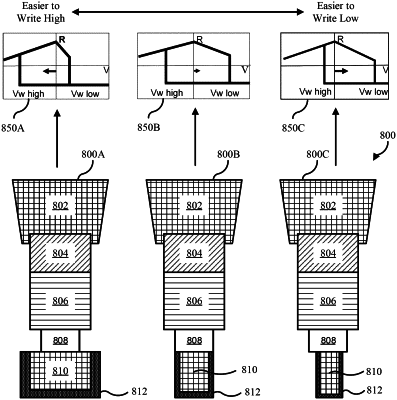| CPC G11C 11/161 (2013.01) [H10B 61/00 (2023.02); H10N 50/01 (2023.02); H10N 50/10 (2023.02); H10N 50/80 (2023.02); H10N 50/85 (2023.02)] | 14 Claims |

|
1. A magnetoresistive random-access memory (MRAM) cell, the MRAM cell comprising:
a top contact;
a hard mask layer below the top contact;
a magnetic tunnel junction (MTJ) below the hard mask layer;
a diffusion barrier below the MTJ;
a bottom contact below the diffusion barrier; and
a magnetic liner arranged around at least a portion of the bottom contact,
wherein the MRAM cell is part of a memory array comprising a plurality of MRAM cells, the plurality of MRAM cells containing a first set of MRAM cells having a bottom contact and magnetic liner with a first critical dimension and a second set of MRAM cells having a bottom contact and magnetic liner with a second critical dimension that is different than the first critical dimension.
|